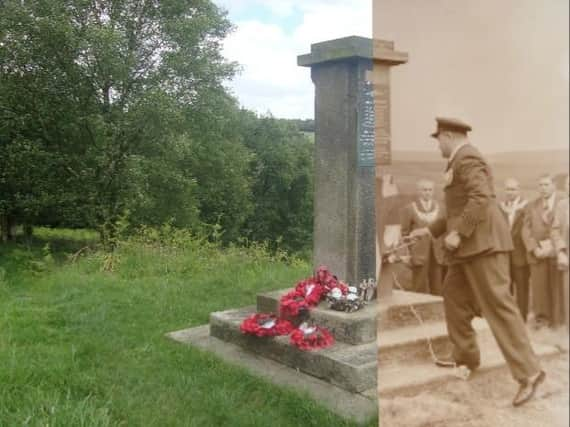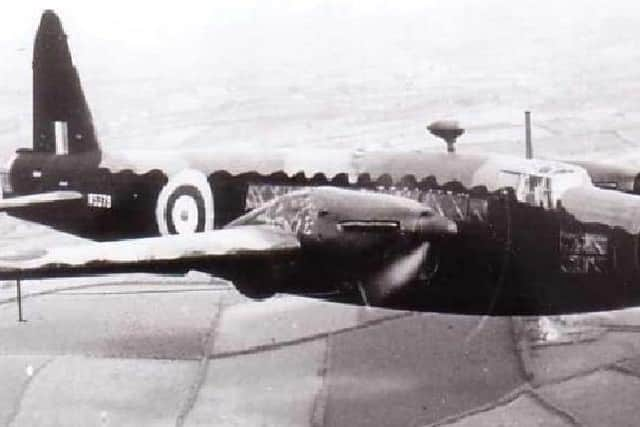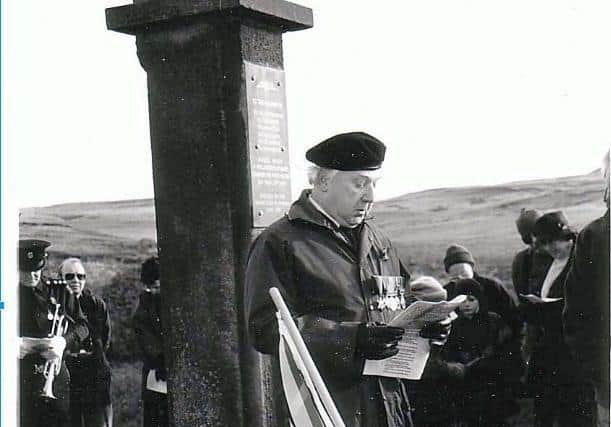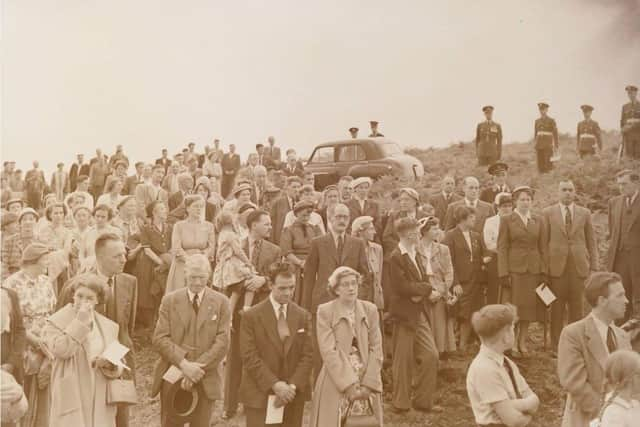Anglezarke air crash: The Wellington Bomber tragedy is almost 80 years ago but the air crew who lost their lives are never forgotten


As the Chorley Guardian reflects on the 150 years since it first published, we're telling the stories which have touched our community. We continue to look back in our Chorley 150 series with local historian Stuart Clewlow
During World War Two people in Chorley bore witness to one of the worst wartime aeroplane crashes in the area, when a bomber of the RAF crashed on the Pennines.
Advertisement
Hide AdAdvertisement
Hide AdAlthough there were fatalities, no one hailed from the immediate region and it was fortunate for the people of Chorley that the aeroplane fell on the moors rather than onto a residential area.


However, nearly 80 years later, the airmen who lost their lives are still remembered.
The numbers are increasing of people making the pilgrimage to the remote spot near the site of the crash where a memorial service takes place every November to ensure that their sacrifice is not forgotten.
On the night of November 15/16 1943, Wellington Bomber Z8799 and its crew of six took off from its base at Wymeswold, Leicestershire at 2152 hours.
Advertisement
Hide AdAdvertisement
Hide AdIt was part of No.28 OTU and was flying a night-time training cross-country exercise on its way to Manchester.


It is believed that part-way through the flight a deadly build up of ice had formed on the airframe of the Wellington.
It was to such a degree that control was lost, and the bomber entered a steep, high speed dive.
This resulted in the structural failure and eventual break up of the aircraft.
Advertisement
Hide AdAdvertisement
Hide AdIt led to the loss of the Wellington and deaths of the entire crew.


The wreckage was scattered far and wide over a large area of Anglezarke Moor.
A Royal Observer Corps member posted at Chorley, reported having heard a loud crash and was instrumental in alerting and directing rescuers to a possible area of impact.
One of the first on the scene was the late, Police War Reserve Constable C.H. Swift.
He led a team of six in search of the Wellington.
Advertisement
Hide AdAdvertisement
Hide AdBy approximately 0800 hours on November 16 1943, they found the majority of the Wellington on its back and the crew within close proximity.
In June 1955, the Rotary Club of Horwich erected a memorial some distance from the site where the majority of the wreckage of the Bomber came down.
The memorial takes the form of a large stone pillar and although bearing an incorrect date of the crash, it importantly lists the names of the crew killed.
There is no visible evidence of the tragedy today, though the crew of the Wellington is by no means forgotten.
Advertisement
Hide AdAdvertisement
Hide AdMemorial services near the site take place every year, with the largest ceremony since the original unveiling, taking place on the 50th anniversary of the tragedy in 1993.
The crew (and their age) were:
Flight Sergeant Joseph Banks Timperon (24), Sergeant Eric Raymond Barnes (22), Sergeant Joseph Banks Hayton (34), Sergeant Robert Sidney Jackson, Sergeant George Ernest Murray, Sergeant Matthew Mouncey (19).
Chorley 150 countdown
This story is part of our Chorley 150 series to mark the 150th anniversary of the Chorley Guardian.If you'd like to suggest a story for this Chorley 150 series then email [email protected]
Comment Guidelines
National World encourages reader discussion on our stories. User feedback, insights and back-and-forth exchanges add a rich layer of context to reporting. Please review our Community Guidelines before commenting.
